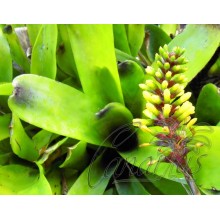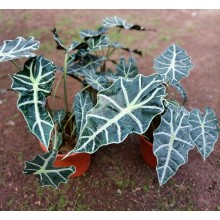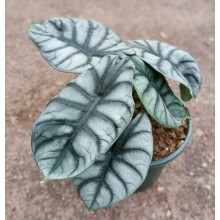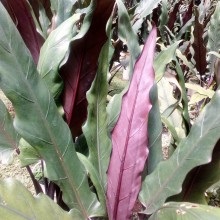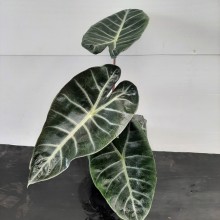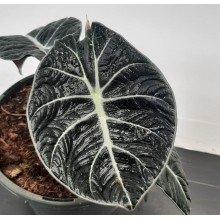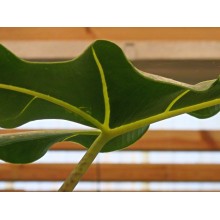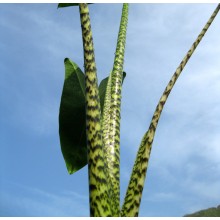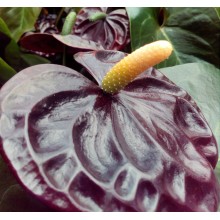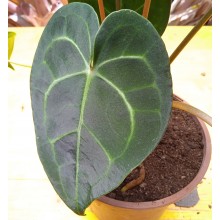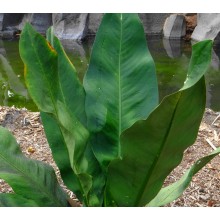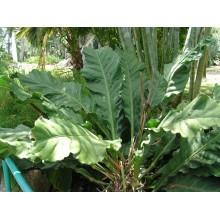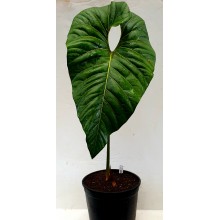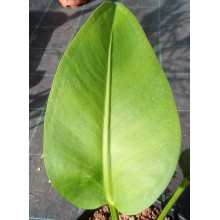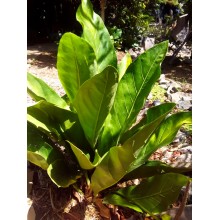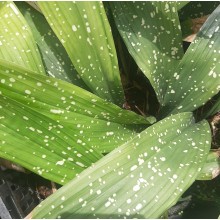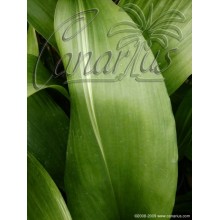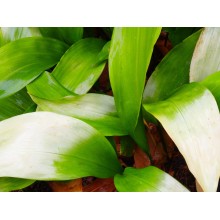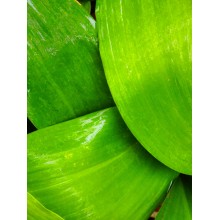Indoor Plants There are 180 products.

This is our selection of plants that can live in your home, as "indoor plants". These hard-to-find species are all very different but they can all be grown in your home. Some can take very low light and some others might need to receive some sun from a window. Palms, bromeliads, cordylines and aspidistras should never dry out. On the other hand, Sansevierias, Hoyas and Rhipsalis need less water and can even take drought.
-
Aechmea blumenavii
Aechmea blumenavii
Frost-hardy Aechmea with blue-tipped green leaves, from the outskirts of a city named Blumenau, in the cool, wet South of Brazil. Spikes of yellow flowers are followed by colourful fruits, lasting months. It can take -7 C (20 F). This is the TRUE blumenavii, not the many mislabelled specimens in the trade.
11,70 € 19,20 € -
Aechmea gamosepala
Aechmea gamosepala
Fast growing mat-forming bromeliad. Small rosettes of pale green leaves produce bright spikes of pink and purple flowers, in the colder winter months. It can take low temperatures with little or no damage at -7 C (20 F) for several hours.
13,20 € -
Alocasia longiloba 'Pink Dragon'
Alocasia longiloba 'Pink Dragon'
Exceedingly beautiful tropical small Alocasia , with glossy deep green leaves, with prominent silvery veins and pink petioles. Its growth habit is similar to the more widely grown Alocasia x 'Polly'.
16,40 € -
Alocasia reginula 'Black Velvet'
Alocasia reginula 'Black Velvet'
This is tiny gem with unreal foliage. Alocasia reginula is a very small Alocasia, most probably from Borneo, with black, light-reflecting foliage.
16,40 € -
Alocasia x 'Sarian'
Alocasia x 'Sarian'
This extremely beautiful hybrid was developed by crossing Alocasia zebrina and Alocasia micholitziana .
34,00 € -
Alocasia zebrina
Alocasia zebrina
Very beautiful species that can also be used as a potted indoor plant, Alocasia zebrina is endemic to the island of Luzon, in the Philippines archipelago. Leaves are glossy, arrow-shaped, with upright zebra-striped petioles. An astonishing pattern!
36,00 € -
Anthurium clarinervium
Anthurium clarinervium
Anthurium clarinervium has thick, cardboard-like leaves that take the shape of a nearly perfect heart. It sports beautiful, sparkling white veins against a deep green, velvety background.
76,90 € -
Anthurium coriaceum
Anthurium coriaceum
We have tried LOTS of aroids outdoors and this is one of the toughest of all birdnest anthuriums. It thrives outdoors here in the subtropics and takes harsh condistions.
53,00 € -
Anthurium crassinervium
Anthurium crassinervium
This "birdnest Anthurium" with glossy, wide and ruffled leaves can slowly grow to enormous proportions. As a house plant it is usually smaller.
46,00 € -
Anthurium decipiens
Anthurium decipiens
This giant-leaved aroid is considered a holy grial by those who love exotic foliage. It was called Anthurium salgarense until 2019, when it was split out of the species salgarense as it was described as a new species on its own.
285,00 € -
Anthurium maricense
Anthurium maricense
Small, elegant birdnest Anthurium with rounded thick leaves,15-30 cm long. It is endemic to a small coastal area close to Río de Janeiro, exposed to wind and drought. It is surprisingly hardy to cold and stood light frost in Mediterranean conditions.
46,20 € -
Anthurium schlechtendalii
Anthurium schlechtendalii
Extremely ornamental birdnest anthurium with nice dark purple inflorescences, followed by thick "tails" of glossy red fruits. It does well in pots or as an epiphytes, attaining 50-120 cm in height. It is mid-sized and goes well as an indoor plant.
58,90 € -
Aspidistra daibuensis 'Totally Dotty'
Aspidistra daibuensis 'Totally Dotty'
This is one of the most beautiful aspidistras we grow. Leaves have a beautiful texture, with tiny elegant ribs, and a lot of well defined spots... sorry "Dots"... these are bright white but their outer edge is yellow and then dark green, so they stand out a lot.
28,30 € -
Aspidistra elatior 'Variegata'
Aspidistra elatior 'Variegata'
Wide exotic striped leaves rise from rhizomes. Aspidistra is a perfect indoor plant and a does well outdoors in the tropical-looking garden.
11,30 € -
Aspidistra elatior 'Asa Ahi'
Aspidistra elatior 'Asa Ahi'
Hard-to-find Japanese selection of "variegated" Aspidistra. It is not striped: each leaf develops a cream white "shade" in the upper part of the blade. Aspidistras make excellent pot plants for shade. They can live indoors or outdoors as they can take real frost.
17,44 € 21,80 €Reduced price! -
Aspidistra elatior 'Bubba'
Aspidistra elatior 'Bubba'
This selection of Aspidistra elatior from Florida is a particularly nice, wide-leaf, solid dark green selection. It grows to at least 1 m tall with broad foliage that may exceed 15 cm in width. A bold garden specimen.
19,40 €
At the moment there are few products in this category Indoor Plants
















